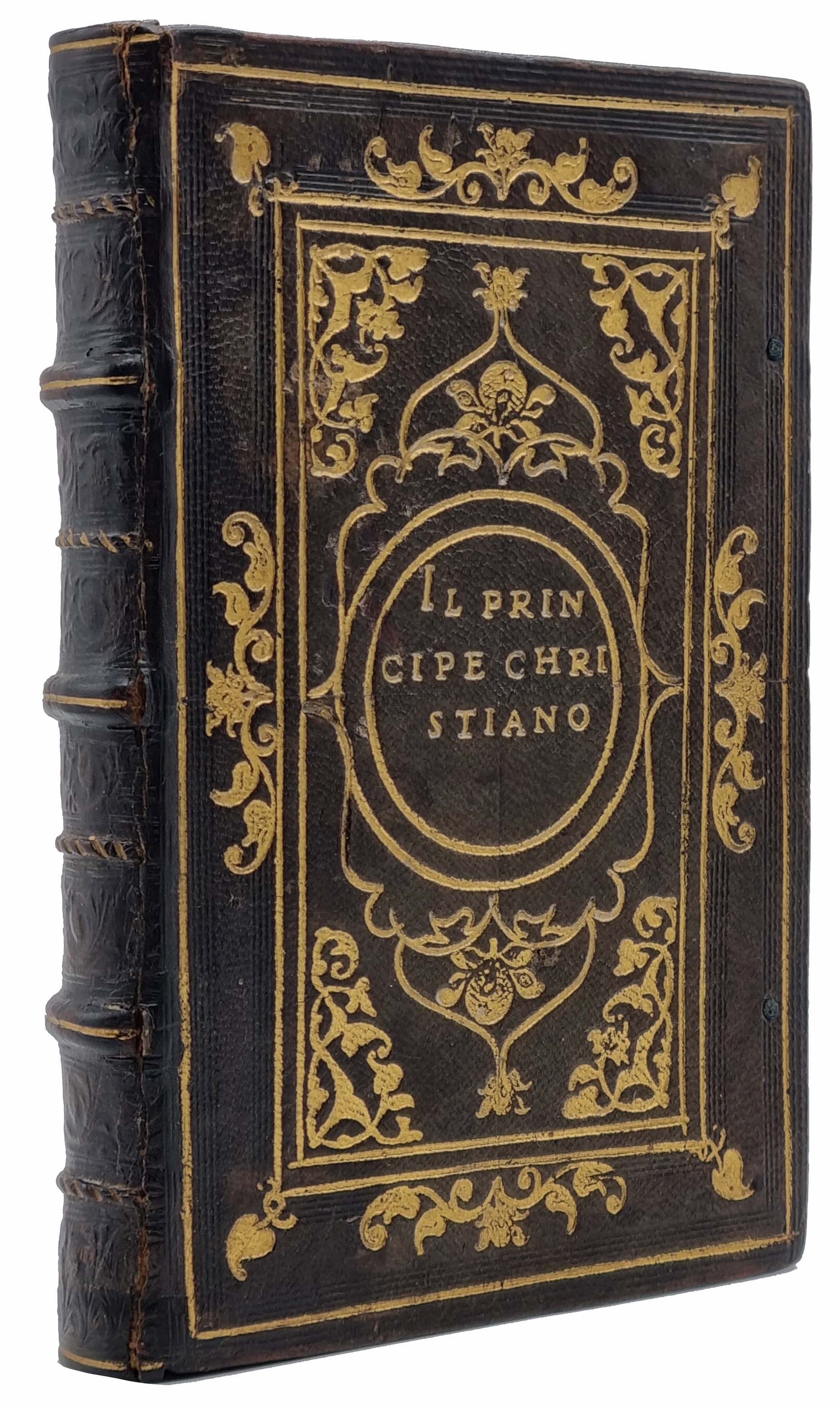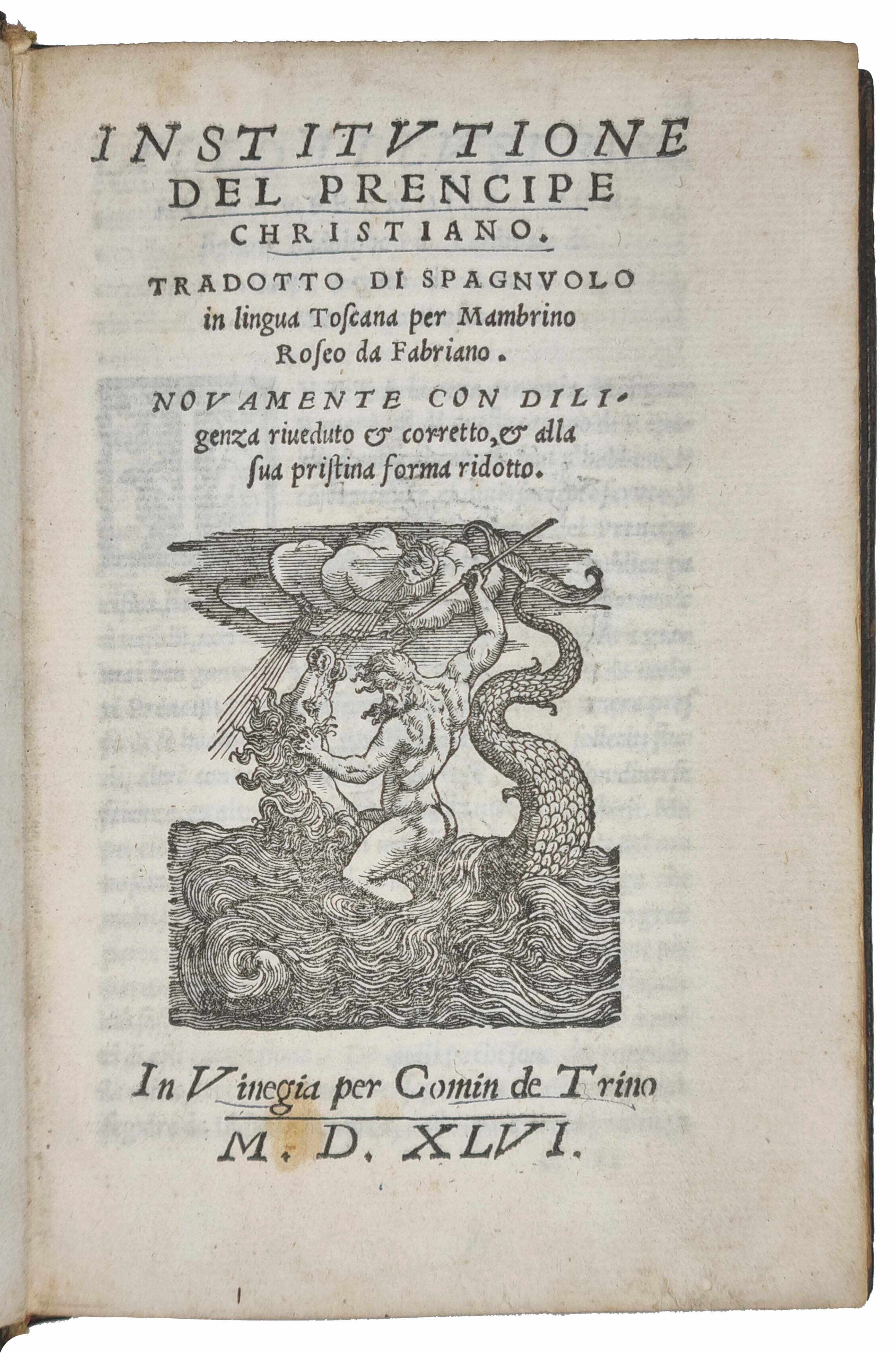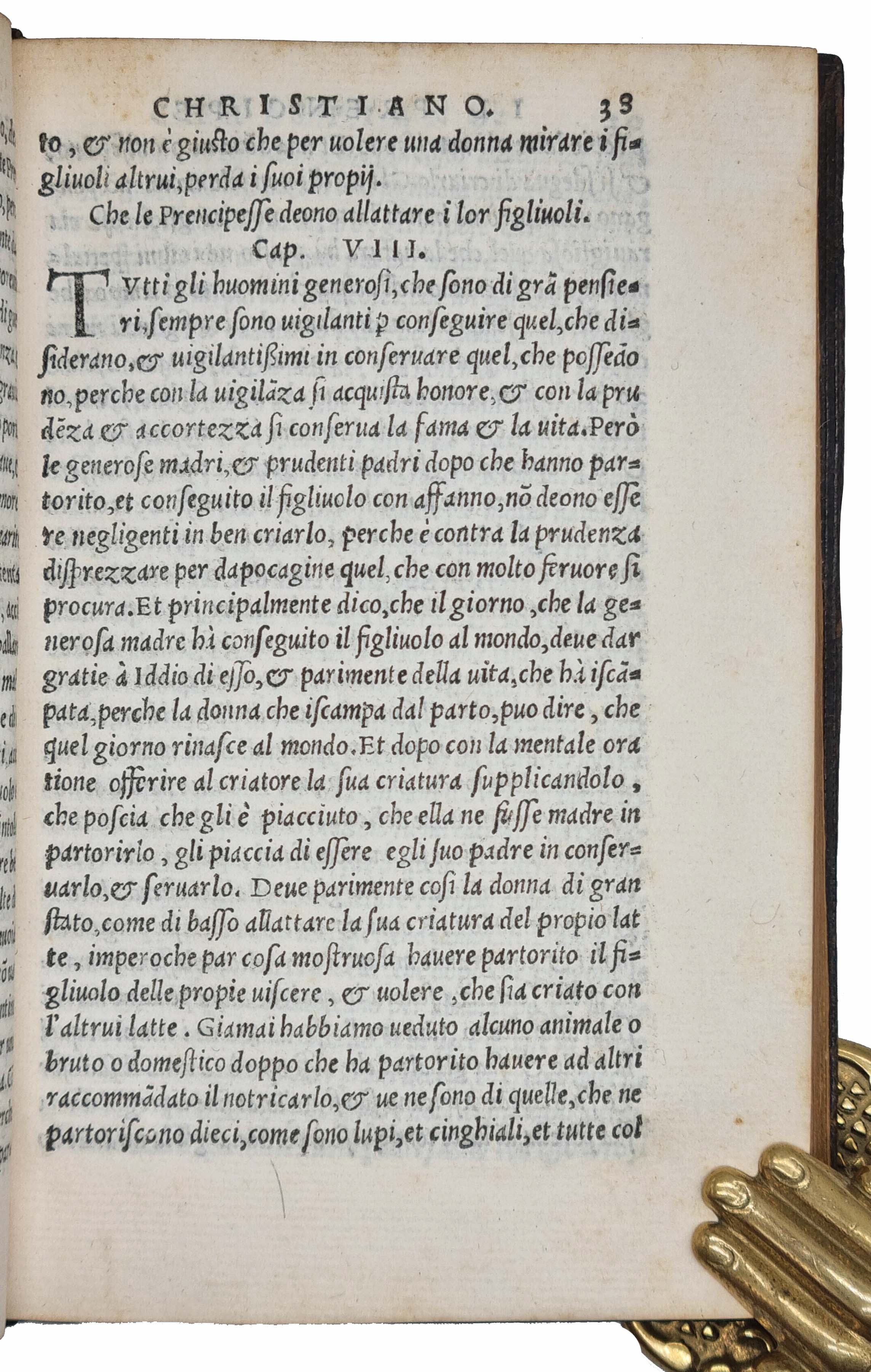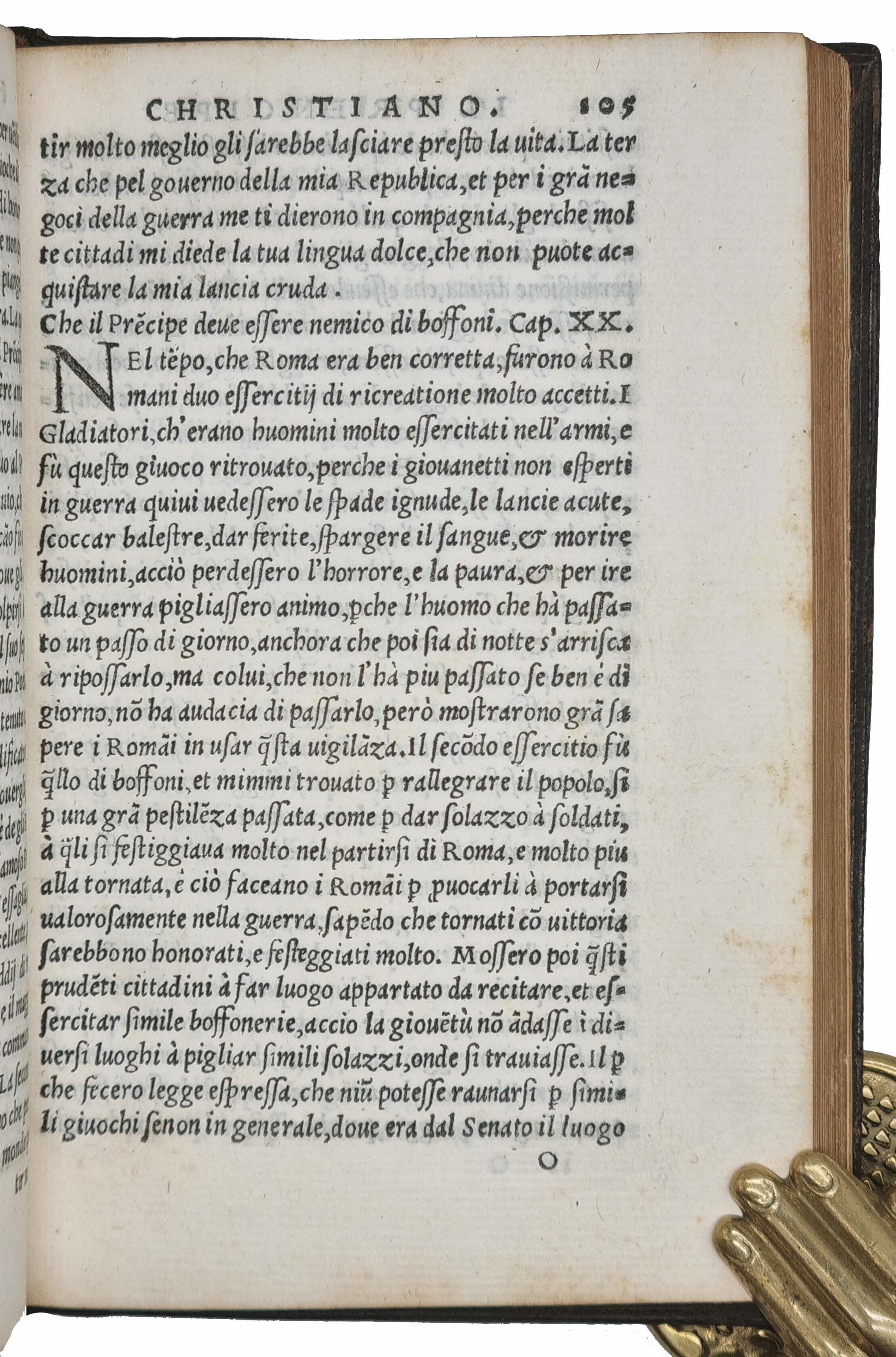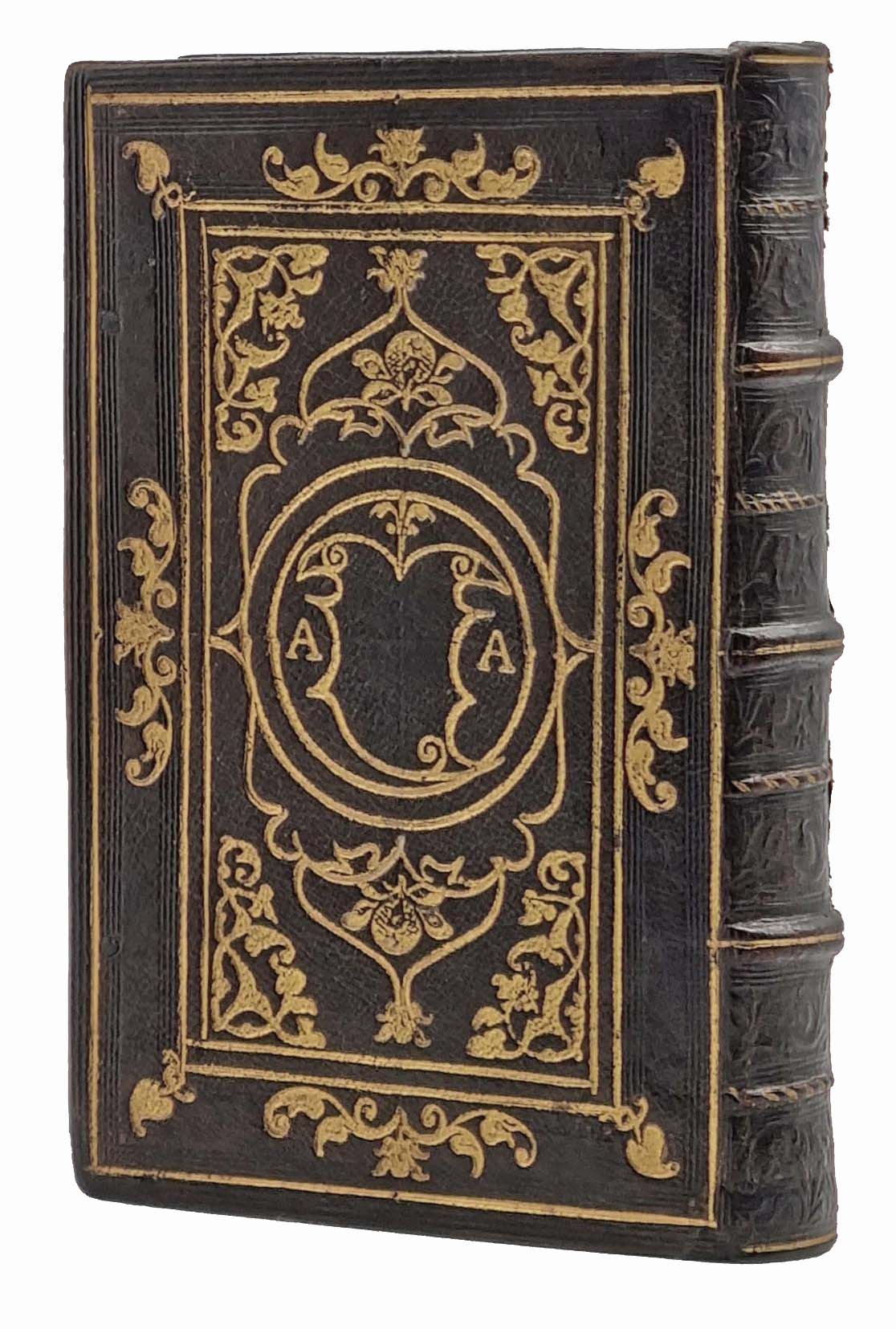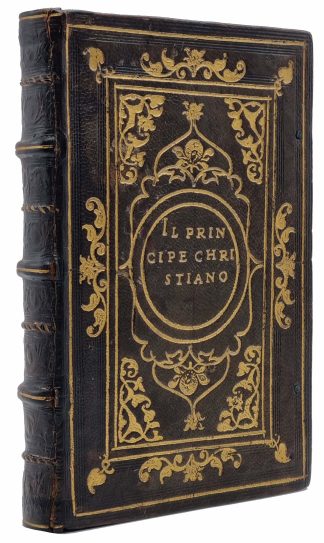ROSEO DA FABRIANO, Mambrino
BY THE VENETIAN APPLE BINDER
Institutione del prencipe christiano
Venice, per Comin de Trino, 1546£9,750.00
8vo. pp. 71 (i). Italic letter, occasional Roman. Woodcut printer’s device to t-p, woodcut initials. Occasional very slight foxing to outer or upper blank margin, small paper flaw to lower blank margin of H1. A very good, clean copy in superb contemporary Venetian olive goatskin, traces of ties, triple blind ruled to a panel design, single gilt ruled outer border, second border double gilt ruled with small ivy leaves to corners, surrounded by four gilt lotus tools, central panel with gilt arabesque cornerpieces and gilt round centrepiece surrounded by gouges and small fleurons with (upper cover) gilt title and (lower cover) the binder’s trade-mark gilt apple flanked by the gilt initials AA, raised bands and smaller false bands, eight compartments decorated with blind-tooled tendrils, bands single gilt ruled or hatched, all edges gilt and gauffered, upper joint cracking but firm, repair at head and foot of spine. Book label of Michel Wittock to front pastedown.
Superbly bound—studied and portrayed in Hobson & Culot, ‘Italian and French C16 Bookbindings’, n.11 (pp.36-37), from the library of Michel Wittock, a major C20 collector of fine bindings. The binding bears the trademark tools—small ivy leaves, lotus tools and the apple-shaped centrepiece, here flanked by the owner’s initials (e.g., de Marinis I, 2162 and 1707, and Henry Davis Gift II, 293-95)—of the Venetian Apple Binder (so named by M. Foot), active c.1530-50s (Henry Davis Gift I, 309-15). He is also known as Fugger Binder (preferred by Hobson and Schunke), as most of the books in the bibliophile Johann Jakob Fugger’s library came from his workshop; he also worked for Cardinal Granvelle and Thomas Mahieu. The same gilt initials AA flanking the apple tool are present on similar bindings gracing five other works (one unnoticed by Hobson & Culot, now Folger 182-313q), all printed in Venice between 1527 and 1546. According to Hobson & Culot, ‘it is possible—though this is pure guesswork—that A A stands for Arnoldus Arlenius, of s’Hertogenbosch, who in 1546 was employed in Venice as the librarian of the Spanish ambassador, Diego Hurtado de Mendoza’. Mendoza, himself a renowned bibliophile, was employing a Venetian binder, Andrea di Lorenzo, who used very similar tools to the Apple Binder.
This most influential and much reprinted ‘mirror for princes’ was originally published in Castilian as ‘Relox de Príncipes’ (Valladolid, 1529) by the Franciscan Antonio de Guevara (1481-1545). It first appeared in Italian in 1543 in a shortened form, translated and revised by Mambrino Roseo da Fabriano. Guevara’s ‘Relox’ was divided into three sections—brought together by the protagonist, the Philosopher-Emperor Marcus Aurelius—instructing Princes on the importance of Christian faith, their relationship with their wife and children, and political virtues. Reprinted nearly two dozen times in the C16, Mambrino’s translation was a collection of selected passages, under a title which reprised Erasmus’s famous ‘Institutio Principis Christiani’ (Buescu, ‘Corte’, 93).
Simplifying for a wider audience the genre of the ‘mirror for princes’, the ‘Institutione’ gathers exemplary anecdotes from the lives of ancient princes. It includes the customary warnings on the importance of virtue (e.g., patience and understanding of poverty) and the abhorrence of vice which might endanger the state (e.g., flattery and ambition). But it also covers topics closer to a prince’s family life. With an eye to a broader readership among aristocrats and the upper middle classes, Mambrino translated sections concerning the fundamental role played by women in the career of a prince, with instructions to princely wives how best to love their spouses, and to their husbands how pregnant princesses should be carefully looked after. A section is also devoted to the education of heirs, and the major role played by nurses; these should be ‘good orators’ and ‘learned, if possible’, women of this kind being still possible to find, ‘though more rarely, in modern times’.
Only Pratt and BYU copies recorded in the US. EDIT16 CNCE 47315; Hobson & Culot, Italian and French C16 Bookbindings, n.11 (this copy).A.I. Buescu, ‘Corte, Poder e Utopia: O Relox de Príncipes (1529) de Fr. Antonio de Guevara e a sua fortuna na Europa do século XVI’, Estudios Humanísticos. Historia 8 (2009), 69-101; I. Schunke, ‘Venezianische Renaissance-Einbände’, in Studi di bibliografia e di storia (1964), IV, 173-6.In stock


